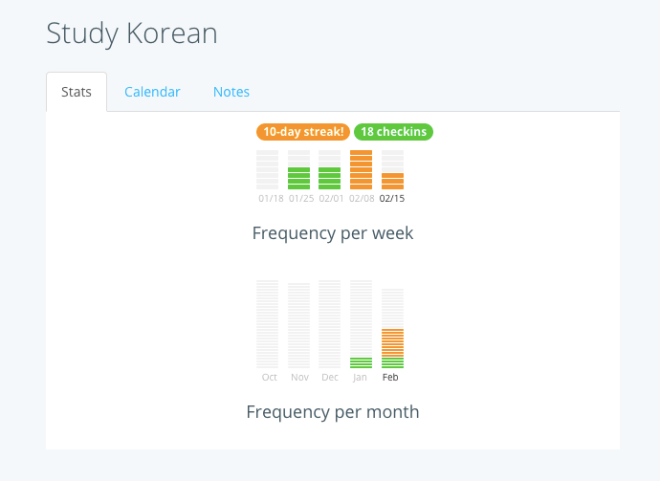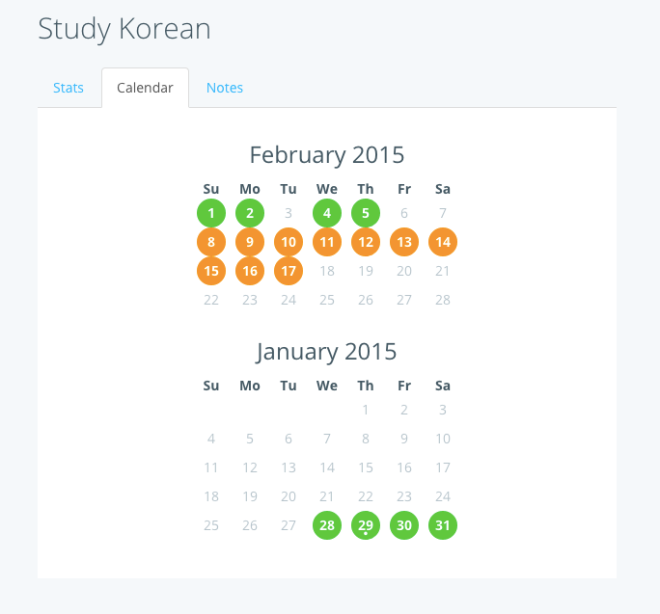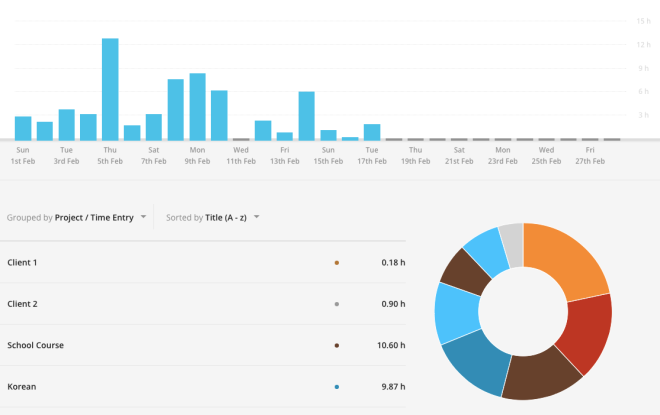How do you guys keep track of your language learning progress? Do you use a spreadsheet? A calendar? Plain ol’ pen and paper? As a lazy person, I can’t always trust myself to study day in and out so I’ve been finding ways to remind myself to do it.
Currently I use Coach.me (which used to be called Lift). It’s a free iOS, Android and web app that let’s you set goals for yourself and requires you to “check in” every day.
Not only do I use it for Korean studies, I also have other goals on there such as Be Grateful, Floss, Do Squats and less regular ones like Pack Lunch The Night Before for the days I have school. The app lets you set a weekly targets (e.g. every day, only Tues and Thurs, etc.) and reminders that can bug you at specific times in the day.
Below is my current progress so far! As you can see, I’ve literally only started self-studying in mid-January. So far I’ve had a 10-day streak which I’m quite proud of. The goal now is to avoid breaking that streak!


Another tool I use is Toggl. This is what I use as a freelance web designer to track my hours. I realized recently that it could also be useful for tracking how long I spend each day doing school assignments and also studying Korean!
Here is the kind of info you would see over time (names of projects replaced to maintain privacy).

It gives you the ability to be more specific too, so what I plan to do is not only track “Korean” but maybe “Korean – TTMIK”, “Korean – Speaking”, and “Korean – Writing”.